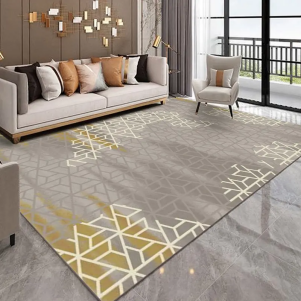In the global flooring industry, New Zealand wool carpet stands as one of the most respected and premium options available. Its reputation for purity, strength, and sustainability makes it highly sought after in commercial projects such as hotels, offices, and upscale retail spaces. However, understanding the New Zealand wool carpet price requires more than comparing numbers — it involves recognizing the craftsmanship, sourcing, and performance behind the product.
Why New Zealand Wool Commands a Premium
New Zealand wool is globally recognized for its superior fiber quality. The natural environment and ethical farming practices contribute to wool that is finer, cleaner, and more resilient than most alternatives.
Key factors influencing the price include:
Fiber Purity: The high natural whiteness of New Zealand wool allows better dye absorption and long-lasting color vibrancy.
Ethical Sourcing: Strict animal welfare and sustainable farming standards increase the overall production cost but ensure responsible supply chains.
Processing Quality: Advanced spinning and weaving techniques add value, improving the carpet’s durability and visual depth.
Eco-Certifications: Compliance with environmental standards and green certifications can add to the final cost.
B2B Pricing Considerations
For distributors, contractors, and design studios, pricing often varies based on several business-level factors:
Order Volume – Larger bulk orders typically offer lower unit costs.
Customization Needs – Color matching, pattern design, or branding elements may influence the total price.
Backing and Finishing Options – Secondary backing or anti-static treatments can increase durability but add to cost.
Shipping and Import Duties – International logistics can impact landed pricing for large-scale projects.
Long-Term Value for Commercial Buyers
While New Zealand wool carpet may have a higher initial price point, its longevity and performance provide measurable ROI in the long run.
Business advantages include:
Lower replacement frequency due to high wear resistance.
Enhanced acoustic and thermal insulation for energy efficiency.
Natural stain and soil resistance reducing maintenance costs.
Contribution to green building certifications such as LEED or WELL.
Market Trends and Forecast
The global market for natural wool carpets is experiencing steady growth, especially in the hospitality and corporate sectors. As sustainability becomes a top procurement priority, New Zealand wool continues to be a preferred choice for B2B buyers aiming to balance performance with environmental responsibility.
Conclusion
When evaluating New Zealand wool carpet price, B2B decision-makers should view it as a strategic investment rather than a cost. Its durability, luxurious appeal, and sustainable production make it a premium yet practical option for modern commercial interiors. Over time, its performance and brand-enhancing aesthetics far outweigh the upfront expense.
FAQs
1. Why is New Zealand wool carpet more expensive than synthetic carpets?
Because it’s made from high-quality, naturally resilient fibers sourced through sustainable farming, offering longer lifespan and superior aesthetics.
2. Does the price vary depending on the type of project?
Yes. Large-scale commercial orders or custom designs often come with different pricing structures based on volume and specifications.
3. Are New Zealand wool carpets suitable for heavy-traffic areas?
Absolutely. The fiber’s natural elasticity and strength make it ideal for hotels, offices, and public spaces with frequent foot traffic.
4. How can businesses reduce overall project costs?
Partnering directly with manufacturers, ordering in bulk, and selecting standard patterns instead of full customization can help optimize the budget.
Post time: Oct-28-2025












